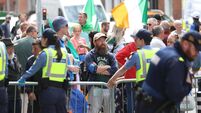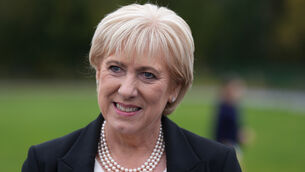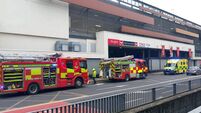Better educated but still lagging in pay and power
The CSO’s Women and Men in Ireland 2011 report shows that more than half of women aged 25 to 35 are third-level qualified, whereas less than 40% of men are so qualified. At school, girls outperform boys in the Leaving Certificate, scoring more As and Bs in honours English, Irish, French, art, music and chemistry, while boys scored better grades in higher maths and physics.
This gender-orientation to subjects was reflected at third-level: three out of four graduates in education, and four out of five in health and welfare, were female, compared with five out of six male graduates in engineering, manufacturing and construction.
The early school-leaving rate among 18- to 24-year-olds was 13% for men and 8% for women. In recent years, the unemployment figure for men was 5%. By 2009, it increased dramatically to 15%; in 2011, it was 17.5%.
For women, the unemployment rate grew from 4% in the mid-2000s to 8% by 2009, and 10% in 2011. For the 20- to 24-year-old age group, a third of men and a fifth of women were unemployed in 2011. The emigration rate rose between 2006 and 2011 — to 38,700 men and 37,800 women.
Since 2006, immigration has fallen from a peak of 60,300 men and 52,100 women, to 20,100 and 22,300 men and women, respectively, in 2011. Last year, this resulted in a net outflow of 18,600 men and 15,500 women.
Men were still more likely than women to be in the workforce in 2011, with just under seven out of 10 men aged over 15 years at work, or unemployed, in contrast to little more than half of women being similarly occupied.
This figure is underpinned by CSO findings: half a million women in 2011 were looking after home/family compared with 9,600 men doing likewise. In 2011, there were 851,300 women and 970,000 men employed in Ireland.
A quarter of women were in professional occupations and a fifth in administrative and secretarial occupations.
Nearly a quarter of men were in skilled trades, while 15% were in professional occupations. Yet men were paid more. However, when adjustments are made for the longer hours worked by men, women’s hourly earnings were 94% of men’s.
When it comes to decision-making, just 15% of TDs in Dáil Éireann were women, in 2011.
Women only account for a third of members of State boards; less than a fifth of members of local authorities; and just a third of Vocational Education Committees. The average representation in national parliaments for EU countries was nearly a quarter.
Finally, of the almost 12,500 people imprisoned in 2010, only one in eight were female.















